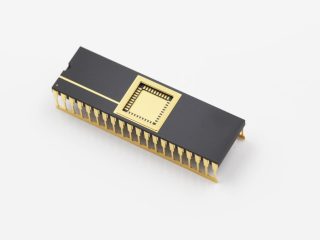Formatec recognized the added value of printing ceramics, field studies were performed and the in-house developed printer was presented during the CIM Seminar, in December 2012.
Background
Additive manufacturing or 3D printing is hot. Many materials are shaped by even more types of processes. By august of 2012 Gartner analysts put the 3D printing developments on top of the yearly hype curve.
In september 2012 Formatec started a thorough investigation on what this technology could mean for shaping ceramics. Soon Formatec recognized the added value of printing ceramics. At the same time it was concluded that the Digital Light Processing (DLP) was the best technology for 3D printing ceramics. The technology can produce high-resolution products and outstands powder lasering when it come to surface quality and product tolerances.

Formatec’s DLP printer
Process
The product CAD file is sliced in layers by specially developed software. Secondly the software communicates with the DLP – Chip and starts to project the desired layer step by step to the reservoir which is filled with photopolymer. This photopolymer is filled with ceramic powder. After every layer the Z-platform moves up and the lighting process for a new layer starts.
When the part is finished the created product is a combination of plastics and ceramics, similar to a injection moulded green product. All installed Formatec processes as debinding and sintering then need to be performed.
Formatec’s DLP printer
The Formatec printer is targeting for small high precision parts.
| Unit | Value | ||
| Resolution | um | 40 | |
| Layer thickness | um | 25 – 100 | |
| Speed | mm/h | 2.5 | |
| DLP Chip | pixels | 1980 x 1080 | |
| Building platform | mm | 76 x 43 | |
Applications
This technology will find three fields of applications;
Prototypes
Producing ceramic prototypes are a costly and time consuming process using traditional available technologies. Applying the DLP print technology a lot size of one can be applied and the throughput time is very short. Moreover, costly technologies as grinding and/or mould manufacturing do not need to be applied.
Typically prototypes are used during the design phase. Using the print technology it is very cost effective to apply changes to the design.
Small scale series production
This technology will be applied in small series production. Batch sizes just greater than the usual batch size for grinding applications and not big enough for ceramic injection moulding will find a application with this DLP print technology. Typical parts will have a complex design, highly accurate and relative small size.
Serie production
These products that are just not able to be produced with any of the current available technologies. Undercuts, complex shaped cooling channels, thin wall, mesh shaping, are just a few examples that can not be shaped with any of the traditional technologies in ceramics. For these designs the DLP printing technology will be used for production purposes.
Advantages / Disadvantages
| Advantages |
Disadvantages |
| No tooling costs | Limited product thickness +/- 2.5mm |
| Series production for complex shaped products | Relative slow production process |
| Prototype with full functional properties | Limited selection of material availibility |
| Extreme high freedom of design | Engineer support structures might apply (depending on design) |
| No costs for design changing | |
| High precision through high resolution | |
| Rapid throughput times |
Future outlook
By designing, engineering and constructing the DLP printer for ceramics Formatec performed the first steps by developing this technology. In the month to come Formatec committed itself to a ambitious development plan with clear deliverables. Working on material availability, material characterization and delivering the first commercial products are a few of the goals for 2013.
Introducing the DLP technology at Formatec’s CIM Seminar
Linked: http://www.formatec.nl/en/information/38-printing-ceramics.html





 Enquiry
Enquiry